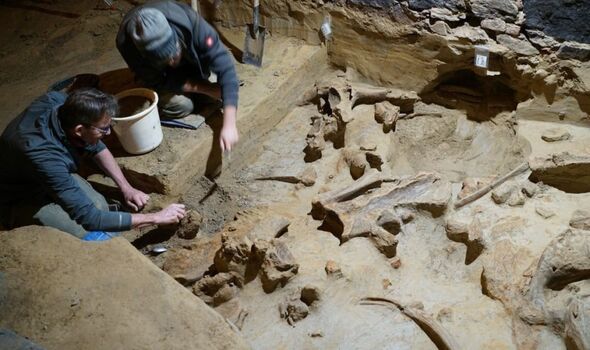In a remarkable archaeological find, an Austrian winemaker has uncovered mammoth bones estimated to be up to 40,000 years old while renovating his cellar.
The discovery, hailed as the most significant in over a century, was made by Andreas Pernerstorfer in Gobelsburg, a small town approximately 45 miles northwest of Vienna.
Pernerstorfer shared with the Austrian Broadcasting Corporation, ORF, that he stumbled upon the bones during the renovation of his wine cellar.
Recalling past discoveries in the town, he initially mistook the bones for a piece of wood left by his grandfather. “I thought it was just a piece of wood left by my grandfather,” Pernerstorfer explained.
“But then I dug it out a bit and remembered that in the past my grandfather said he had found teeth. Then I immediately thought it was a mammoth.”
Researchers from the Austrian Academy of Sciences are now thoroughly examining the site, which they have described as a “significant bone site” containing remains of at least three different mammoths.
Since mid-May, archaeologists have uncovered several layers of bones alongside stone artefacts and charcoal, dating the site to between 30,000 and 40,000 years old.
Hannah Parow-Souchon, who is leading the excavation, highlighted the rarity of such a dense mammoth bone layer. “Such a dense mammoth bone layer is rare,” she said. “It is the first time that we have been able to investigate something like this in Austria using modern means.”
Woolly mammoths, similar in size to modern African elephants, with males growing up to 3.5 meters tall and weighing more than 8 tonnes, coexisted with stone-age humans. These early humans used mammoth bones and tusks for making tools, art, and artefacts, and hunted the creatures for their meat.
The discovery raises intriguing questions about ancient human hunting practices. Parow-Souchon speculated on the potential methods used by stone-age humans to kill such enormous animals.
The presence of bones from three different mammoths could suggest that the site was a place where the animals were driven and trapped. “We know that people hunted mammoths, but we still know little about how they did it,” she added.
Following excavation, the mammoth bones will be transported to the Vienna Museum of Natural History for further study and preservation.
